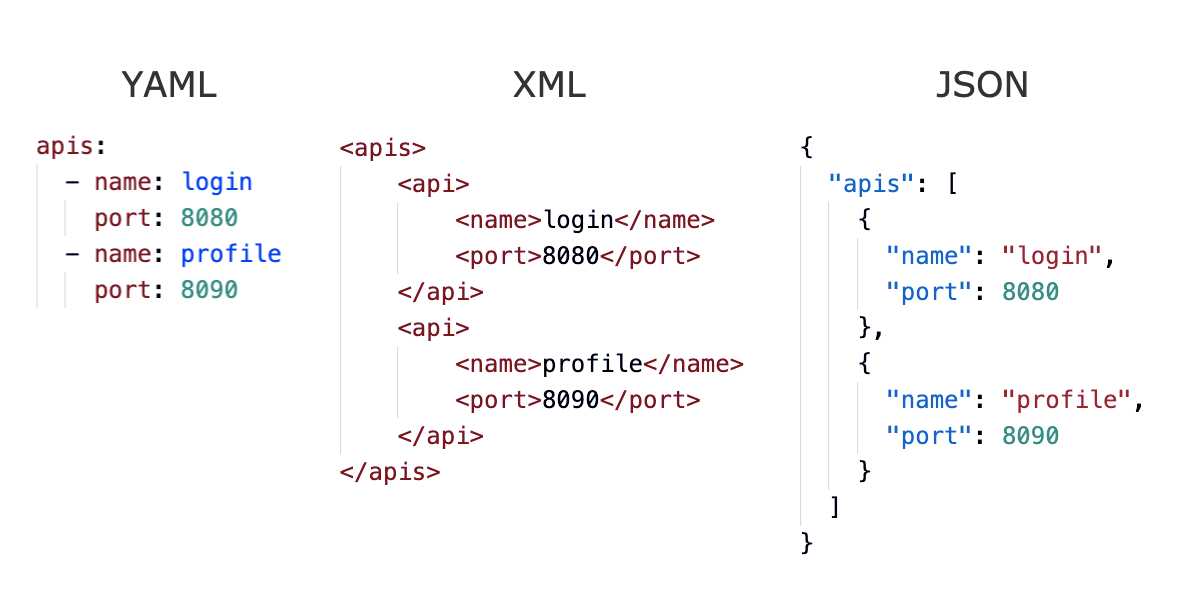For those working with configuration files and data serialization, the choice between YAML vs YML can sometimes cause confusion. While they appear nearly identical at first glance, there are subtle distinctions between the two that hold significance for developers. This comprehensive guide delves into the intricacies of YAML vs YML, exploring their definitions, functionalities, advantages, and use cases to empower you with a well-informed decision for your project’s needs.
What is YAML?
YAML, standing for YAML Ain’t Markup Language, is a human-readable data serialization format widely adopted for configuration files and data exchange across various programming languages. It emphasizes readability and ease of use, employing indentation and a clean syntax to represent complex data structures like lists, maps, and strings. This characteristic makes YAML files readily understandable both humans and machines, streamlining configuration management and data exchange processes.
What is YML?
YML simply refers to the filename extension typically associated with YAML files. In essence, YML is a convention, not a separate data format itself. When you save a file containing YAML-formatted data, “.yml” is the most commonly used extension to signal its content type. However, some systems might employ “.yaml” as well. Ultimately, both extensions denote YAML data.
Key Differences Between YAML vs YML
While functionally equivalent, a minor distinction exists between YAML vs YML:
- YAML: Represents the data serialization format itself, defining the syntax and structure for representing hierarchical data.
- YML: Denotes the filename extension convention, indicating the file contains YAML-formatted data.
In essence, YAML dictates the data’s structure, while YML signifies the file format.
Advantages of Using YAML
YAML offers several compelling benefits for developers:
- Readability: YAML’s focus on human-friendliness makes it exceptionally easy to read and comprehend, even for those unfamiliar with its syntax. Indentation plays a crucial role in defining data hierarchy, fostering intuitive understanding of complex structures.
- Conciseness: YAML is known for its compact nature. Compared to other data serialization formats like XML, YAML files tend to be significantly smaller, streamlining storage and transmission.
- Language Independence: YAML boasts language independence, meaning it can be seamlessly integrated with various programming languages. This flexibility eliminates the need for language-specific data parsers, simplifying data exchange across diverse development environments.
- Data Portability: YAML files are highly portable, transferable between different systems and applications without modification. This characteristic ensures data integrity and facilitates collaboration across development teams.
- Ease of Use: YAML’s straightforward syntax makes it effortless to learn and use. Developers can quickly grasp the basics and start working with YAML files efficiently, minimizing the learning curve.
Common Use Cases for YAML
YAML’s versatility extends to a broad range of applications:
- Configuration Management: YAML excels in configuration management, particularly for defining application settings, server configurations, and deployment pipelines. Its readability enables developers to maintain and modify configurations effortlessly.
- Data Serialization: YAML is a proficient tool for data serialization, representing complex data structures in a transferable format. This functionality proves valuable for exchanging data between applications or persisting data to files.
- API Documentation: Some API documentation tools leverage YAML to describe API endpoints, data structures, and parameters. This approach enhances API clarity and simplifies integration for developers.
- Build Automation: YAML plays a role in build automation workflows, defining steps and configurations within build scripts. Its conciseness and readability streamline the build process.
When to Choose YAML
Opt for YAML when:
- Readability is Paramount: If prioritizing human-understandable configuration files is essential, YAML’s clear syntax makes it an ideal choice.
- Data Portability is Required: For projects demanding seamless data exchange across various systems, YAML’s language independence becomes a significant advantage.
- Configuration Management is Central: When managing complex application configurations, YAML’s suitability for configuration files simplifies maintenance and collaboration.
- Simplicity is Key: If your project prioritizes a straightforward data serialization format that is easy to learn and use, YAML stands out as a compelling option.
Conclusion
YAML vs YML, though often used interchangeably, represent distinct concepts. YAML is the data serialization format, while YML signifies the corresponding filename extension. Understanding this difference empowers developers to make informed decisions when working with configuration files and data exchange. YAML’s emphasis on readability, conciseness, and language independence makes it a popular choice for various development scenarios. By carefully considering your project’s requirements, you can leverage YAML’s strengths to streamline data management, enhance collaboration, and ensure efficient development workflows.



